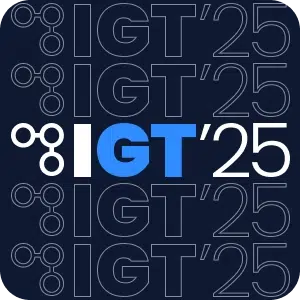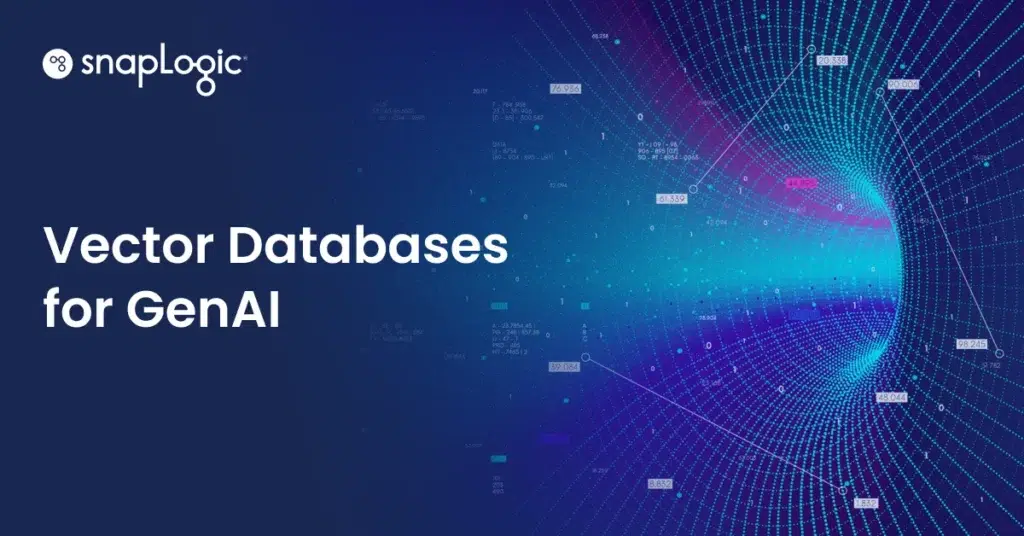What are vector embeddings?
Vector embeddings are numerical representations of data points that capture their meaning and relationships. They transform various types of data, such as words, images, or sentences, into arrays of numbers that machine learning models can process. Vector embeddings allow data to be expressed in a multidimensional space where similar data points are closer together, making it possible to perform mathematical operations and comparisons on the data.
How do vector embeddings work?
Vector embeddings translate complex data into high-dimensional vectors where similar data points are closer together. These vectors allow applications like semantic search, recommendation engines, and image similarity searches by comparing and retrieving similar embeddings in a vector database. This enables systems to work with data in a way that reflects real-world relationships, meaning, and context.
Examples of vector embeddings
Vector embeddings are used across various domains, and each type captures distinct characteristics of the data it represents.
Common examples of vector embeddings include:
- Word embeddings
- Contextualized embeddings
- Sentence and document embeddings
- Image embeddings
- Audio embeddings
- Graph embeddings
- User and item embeddings in recommendation systems
- Time-series embeddings
- Cross-modal embeddings
Industry use cases of vector embeddings
Vector embeddings have broad applications across industries, enhancing search, personalization, and analysis. Here are some examples of vector embeddings tailored to specific industries:
E-commerce and retail
- Product recommendations: Embeddings capture product features (e.g., style, color, and price) and user preferences, enabling personalized recommendations for customers. For example, embedding models might suggest items with similar embeddings to products previously viewed or purchased by a customer.
- Visual search: Vector embeddings generated from images allow users to search for similar-looking products. If a customer uploads an image of a shoe, embeddings can help find visually similar shoes from the catalog.
- Customer segmentation: By embedding user behavior data (like purchase history and browsing patterns), retailers can identify customer segments with similar preferences for targeted marketing.
Finance and banking
- Fraud detection: Embedding transaction patterns helps detect anomalies by comparing new transactions to typical behavior patterns. Fraudulent activities are often identified as outliers in the vector space.
- Customer risk profiling: Embeddings capture various data points about customers (like credit history, spending habits, and income) to predict risk levels and assess creditworthiness.
- Personalized financial advice: By embedding customer behavior and product data, financial institutions can recommend services or products tailored to customer needs, such as loan products or investment options.
Healthcare and life sciences
- Drug discovery: Embeddings represent molecular structures and biological interactions, helping identify molecules with similar properties. This accelerates the discovery of potential drug candidates by matching molecules with known drug-like characteristics.
- Patient similarity analysis: Patient embeddings, created from data like medical history, symptoms, and test results, allow for clustering patients with similar profiles to provide personalized treatment plans and identify patterns in patient health.
- Medical image analysis: Vector embeddings from medical images (e.g., X-rays or MRIs) help identify similar cases, support diagnostics, and assist in disease detection by comparing a new image’s embedding to those in a database.
Manufacturing and supply chain
- Predictive maintenance: Embeddings of sensor data from machinery allow early identification of wear patterns and anomalies, helping prevent equipment failure and schedule maintenance.
- Inventory optimization: Embedding supply chain data (such as supplier history, demand patterns, and pricing) helps optimize inventory and predict supply bottlenecks, improving operational efficiency.
- Quality control: Visual embeddings from product images allow systems to detect defects by comparing embeddings of new items against those of known high-quality items.
Travel and hospitality
- Personalized travel recommendations: By embedding user travel history and preferences (like preferred destinations, accommodations, and travel styles), travel platforms can offer tailored travel suggestions, such as vacation packages, hotels, or activities.
- Image-based destination search: Using embeddings from images, users can search for destinations that look similar to photos they’ve uploaded, making it easier to find visually appealing vacation spots.
- Customer feedback analysis: By embedding reviews and feedback, travel and hospitality businesses can analyze customer sentiment and identify popular amenities or areas of improvement.
Telecommunications
- Churn prediction: Embedding customer interaction data (e.g., usage patterns, billing, support tickets) helps telecom companies predict customer churn, allowing them to take proactive steps to retain high-risk customers.
- Network optimization: Embeddings of network performance data (like bandwidth usage and latency) allow companies to identify patterns and optimize network resources for improved service quality.
- Targeted service recommendations: Customer embeddings based on device preferences, app usage, and service history allow telecoms to offer plans or add-ons that best match customer needs.
In each of these industries, vector embeddings enable systems to find patterns, make predictions, and personalize services in ways that were previously difficult or impossible, greatly enhancing industry-specific applications.
How are vector embeddings stored?
Vector embeddings are stored in a structured format optimized for efficient retrieval and similarity search. Here’s a breakdown of the common methods and considerations used in the storage of vector embeddings:
- Flat files and databases
- Specialized vector databases
- High-performance in-memory storage
- Indexing for similarity search
- Compression techniques
- Metadata storage and filtering
- Persistent storage and versioning
By using these storage methods, vector databases manage large-scale embeddings, making it efficient to perform similarity searches and integrate vectors into applications like recommendation systems, search engines, and personalization systems.




